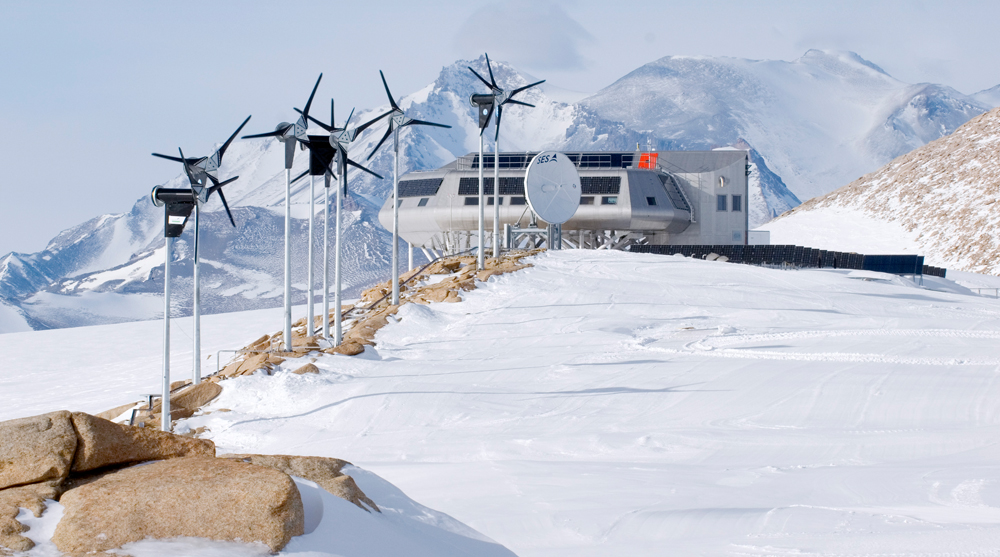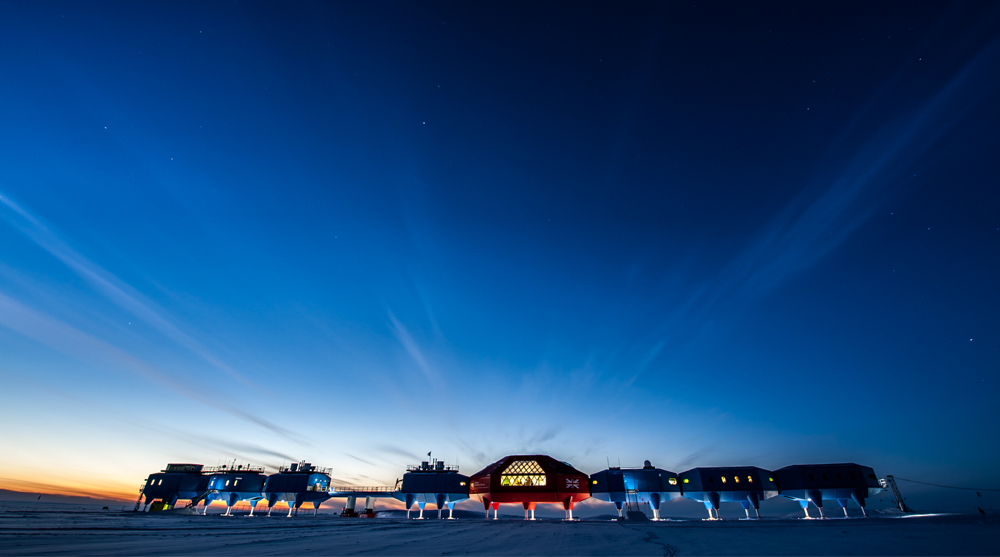Mankind has never been complacent to just stay put, and exploration into the farthest reaches of our planet has resulted in human settlements in some seriously extreme locations. As a result, architecture has been forced to adapt to allow humans to live in such extreme conditions, and advances in technology have meant that mankind is able to live and explore even more remote and isolated environments.
A million miles away from the tents and sleeping bags of Roald Amundsen and those with him who were the first to stand at the South Pole, modern architecture in Antarctica can be used as a model for how to adapt and live in such extreme conditions.
Princess Elisabeth Antarctica research station
Belgium has had a strong presence at the southernmost point of the world since 1898, and its most recent structure has used cutting edge science and technology to become the world’s first “zero emission” scientific research station. The Princess Elisabeth Antarctica research station is solidly anchored onto the granite ridge of Utsteinen Nunatak, at an altitude of 1382 metres, in the Dronning Maud Land region of East-Antarctica which is approximately 220 km from the Antarctic coast. The zero emission polar research centre is an ideal logistics hub for field exploration in the 20°- 30° E sector of Antarctica.
Image sourceThe Princess Elisabeth incorporates a layered design which works to eliminate the need for internal heating, allowing perfect integration of the living quarters which maximises both heat distribution and energy use. The station also turns a challenge into an opportunity, by taking advantage of the environment's extreme conditions to power the station. 24 hour sunlight in the summer months is captured by solar panels, and gale force winds are harnessed to provide the station with renewable power.
Halley VI Research Station
The British Antarctic Survey’s Halley VI was the world’s first relocatable research station, with raised legs which counter the accumulation of snow, and connected modules that can be moved around independently. Built on a floating ice shelf in the Weddell Sea, the Halley VI Research Station enables scientists to study pressing global problems within state of the art laboratories, such as climate change, rising sea levels, and the ozone hole (which was first discovered at Halley in 1985). Halley VI is segmented into eight modules, each sitting atop ski-fitted, hydraulic legs which allow each module to be towed independently to a new location.
Image sourceThe architecture and technology used to create living and research centres in the most remote and inhospitable region on the planet shows just how adaptable humans are to living in extreme environments. They also have wider applications as the designs and ideas could be implemented to architecture in other locales affected by extreme weather. For instance, those areas affected by natural disasters such as earthquakes, hurricanes, tsunamis and tornadoes.
In fact, the architecture used in Antarctica could one day be developed for humans to exist in environments even more alien than the South Pole, perhaps even allowing mankind to settle on other worlds.
Iceland architecture competition series
Iceland is a land a little bit closer to home than Antarctica (for some of us) yet as alien and mystical as it comes, and this type of architecture is becoming increasingly important to those wishing to explore its extensive natural beauty.
Explore our Iceland architecture competition series and dream up new and exciting ways in which architecture can enhance the Iceland experience.
Top 3 Reasons Why You Should Enter Architecture Competitions
Curious about the value of architecture competitions? Discover the transformative power they can have on your career - from igniting creativity and turning designs into reality, to gaining international recognition.
Learn more



























